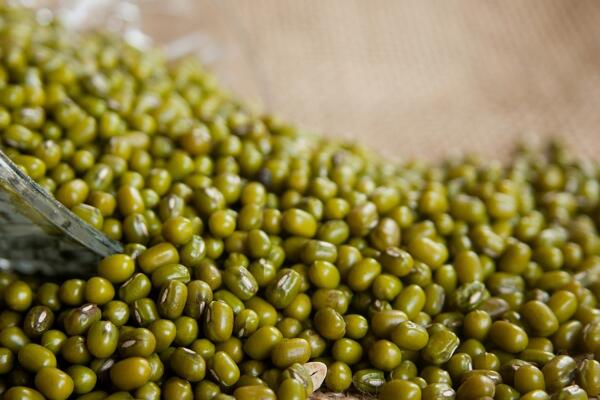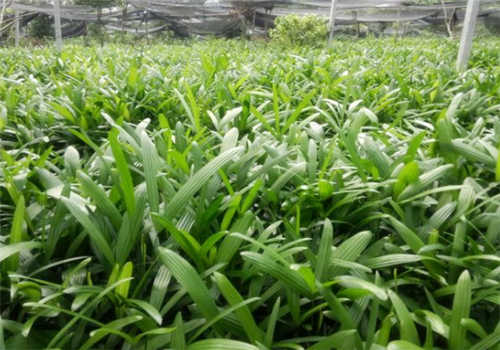How long does it take for mung beans to blossom? When will you sow and reap? What are the planting methods?
Mung beans belong to the legume family. Alias green adzuki bean, green bean, planted bean and so on, has been cultivated in China for more than two thousand years. So how long does it usually blossom? When will you sow and reap? What are the planting methods? According to the data of cowpea, the flowering period of mung bean is from June to July in spring and the fruiting period is August. After wheat harvest, summer sowing blossoms in August and mature in mid-late September. Erect type, short growth period, early flowering. The varieties with tall vine and long growing period blossom late. Flowering is continuous, with the growth of gradually budding, flowering, pods. From emergence to flowering, the growth period is short, and the summer sowing begins to blossom in about 50 days. About 60 days of spring sowing and long growing period begin to blossom and bear fruit.

When do mung beans sow and harvest?
1. If the woodland is free, the sowing date can be arranged in the first ten days of April; if there is a previous crop, it can be arranged to sow in the box after the small spring harvest, and the suitable sowing date must be arranged before the end of May to preserve the seedlings and obtain high yield. We should insist on grabbing the moisture in time and sowing seeds when the soil is wet after rain. In case of drought, we can shower nests with clear dung water after sowing. Sow seeds within 1 kilogram per mu, mix seeds with 10 grams of ammonium molybdate and 10 kilograms of water per mu (the unused water is set aside), sow seeds after sweating. The sowing specifications are as follows: net sowing 2m open box, row spacing 50cm, nest spacing 40cm, per mu 3200mu 3400 nests, 5m 6seeds per nest, 2m 3 seedlings per nest, about 9500 seedlings per mu; fruit forest land, on the basis of the 40em distance between the foot and the base of fruit trees, and then 2m open box, which is roughly the same as the sowing specification of net cropping; intercropping refers to net cropping specifications and determines the sowing amount per mu according to the situation. Application of base fertilizer: 20 kg of calcium magnesium phosphate fertilizer plus 1000 kg of ash fertilizer or 25 kg of plant ash per mu, and then evenly mixed with sand loam 300kg cover seed. The effect of covering seed with 15 kg of high-quality bio-organic fertilizer and 300 kg of sandy loam was the best.
2. Mung beans are harvested in August and are generally listed in the first half of August. Its maturity is uneven and should be picked as it matures according to the situation. If a harvest is often needed in the case of large-scale planting, the timely harvest should be marked by the fact that 2 of all the pods of mung beans turn brown and black. Under the condition of high temperature, mature pods are easy to crack and should be harvested before dew in the morning or in the evening. The harvested pods can be stored or sold after drying, threshing and cleaning.
What are the planting methods?
The main results are as follows: 1. Although mung bean rhizobium has the ability of nitrogen fixation, the application of farm manure and phosphorus and potassium fertilizer can obviously increase the yield. The application of farm manure can be given to people once before sowing, and ploughed and turned over after application. If it is too late to apply basal fertilizer, it is necessary to apply a certain amount of nitrogen and phosphorus fertilizer in the early growth stage, that is, the branching and early flowering stage, in order to enhance the nitrogen fixation ability of rhizobium and increase flower bud differentiation.
Second, sowing mung beans can be sowed in spring and summer. Spring sowing is from late April to early and mid-May. Summer sowing is in mid-and late June, so we should strive to sow early. Mung bean seeds have 10% small hard particles, which are difficult to germinate after sowing, which can easily cause lack of seedlings and broken ridges, so they should be screened out before sowing. The sowing rate per mu is generally 1.5 Mel 2 kg, and the sowing depth is 3 mi 5 cm.
III. Field management
1. Intermediate seedlings and fixed seedlings when mung beans reach two leaves in one heart after emergence, pimple seedlings should be removed. When 4 leaves, the plant spacing is 13-16 cm, the row spacing is about 40 cm, and 1-12500 seedlings per mu is suitable.
2. from seedling emergence to flowering and ridge sealing, mung beans are generally hoed at least four times, and the depth of intermediate ploughing is from shallow to deep and then to shallow.
3. The flowering and podding period of mung bean in irrigation and drainage is the peak period of fertilizer and water. if there is drought in this period, it should be watered in time to keep the soil moist. However, the flowering and podding period is often in the rainy season, which makes the stems and leaves grow, resulting in a large number of falling flowers, pods, or stagnant water and death. It is necessary to drain water in time to ensure the normal growth of mung beans.
4. Intercropping mung bean has strong shade tolerance, interplanting or mixed with tall stalk crops in production. Introduce several forms:
Spring corn is interplanted with mung beans. Spring corn is planted in large and small rows, big row 1 meter, small row 50 cm, plant spacing 33 cm, about 2650 plants per mu, or large row 1.6m, small row 50 cm, plant spacing 26 cm, about 3000 plants per mu. After pollination, precocious mung beans with short growth period, small plants and concentrated pods were interplanted with 3Mel among large rows. The row ratio is 2:4, or the row ratio is 1:1, that is, single-row spring corn with single-row mung beans, this type of mung beans is too shady, affecting the yield.
Mung beans between summer corn. Summer corn is planted in large and small ridges, and two rows of precocious mung beans are interplanted between large rows. If interplanting corn in wheat field requires mung bean, mung bean can be sown immediately after wheat harvest; if corn is replanted after wheat harvest, mung bean and corn can be sown at the same time at 2:2.
Mixed with mung bean and summer sesame. After wheat harvest, mung bean and sesame seeds are mixed at the same time. After sesame harvest, mung bean is in full bloom and pod stage, and the light is sufficient, which is beneficial to the growth and fullness of mung bean.
Intercropping between mung bean and millet. In the intercropping of mung bean and summer millet, millet is interplanted at 4:2 or 2:2 after wheat harvest. In short, when interplanting mung bean with corn, millet or sweet potato, the row spacing is generally adjusted to interplant mung bean without affecting the density of the main crop. If green manure is pressed with mung bean, the effect is the best at full flowering stage. If mung beans are interplanted in wheat ridges, mung beans will become monoculture after wheat harvest.
Fourth, the prevention and control of diseases and insect pests mainly control mung bean weevil, adults lay eggs on bean grains or young pods, and the larvae hatch and eat human beans. Prevention and control methods: before storage, bean grains are fumigated with 1.5kg sodium cyanide per thousand cubic meters for 48 hours, the temperature is above 20 ℃, the insecticidal efficiency is 100%, and does not affect the germination rate; closed storage anoxic storage; a small amount of storage can be soaked in boiling water for 20 minutes, fished out and dried in the tank, can be preserved for a long time, and does not affect the germination rate.
Time: 2019-04-11 Click:
- Prev

When does the brown bamboo split? How to carry out daily maintenance?
Palm bamboo, also known as palm bamboo, is an evergreen foliage plant of Palm family. The viewing effect is very good, with some Jingshan, it has the feeling of tropical rain forest, so do you know when the brown bamboo will split? How to carry out routine maintenance? Brown bamboo split time brown bamboo ramet culture is usually carried out in spring combined with changing pots.
- Next

How long does it take a rose from seed to blossom? What month does it open? How do you raise it?
Rose, also known as lingering flowers, assassins, heart-piercing roses, is a shrub of the genus Rosaceae native to China and is widely planted everywhere. Do you know how long it takes from seed to flowering? What month does it open? How to raise it? According to Rosaceae data, the rose florescence is from April to May. Let's explain here that the rose we're talking about now
Related
- Fuxing push coffee new agricultural production and marketing class: lack of small-scale processing plants
- Jujube rice field leisure farm deep ploughing Yilan for five years to create a space for organic food and play
- Nongyu Farm-A trial of organic papaya for brave women with advanced technology
- Four points for attention in the prevention and control of diseases and insect pests of edible fungi
- How to add nutrient solution to Edible Fungi
- Is there any good way to control edible fungus mites?
- Open Inoculation Technology of Edible Fungi
- Is there any clever way to use fertilizer for edible fungus in winter?
- What agents are used to kill the pathogens of edible fungi in the mushroom shed?
- Rapid drying of Edible Fungi

